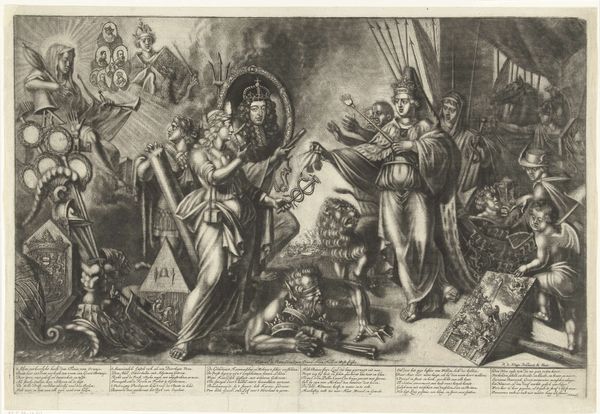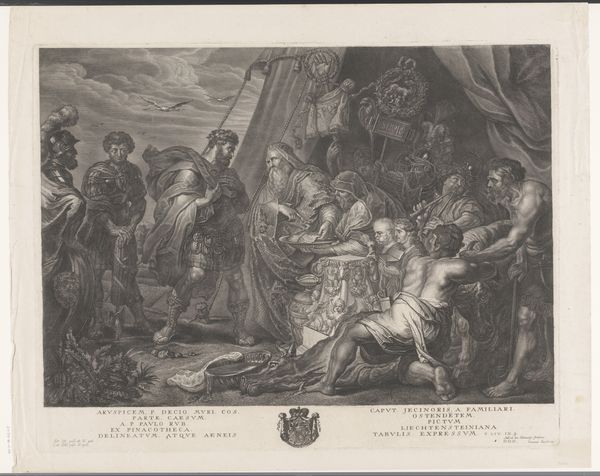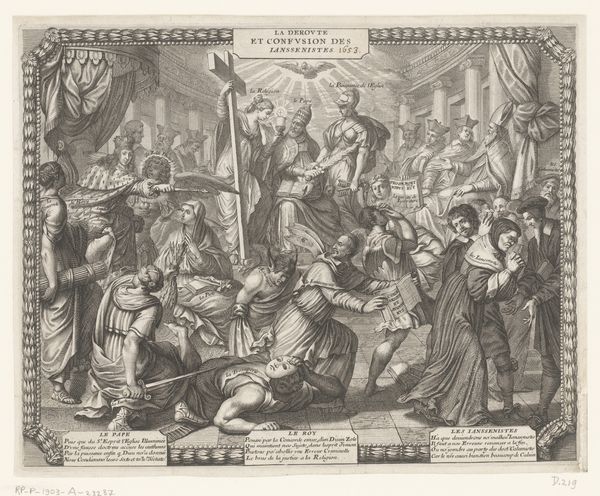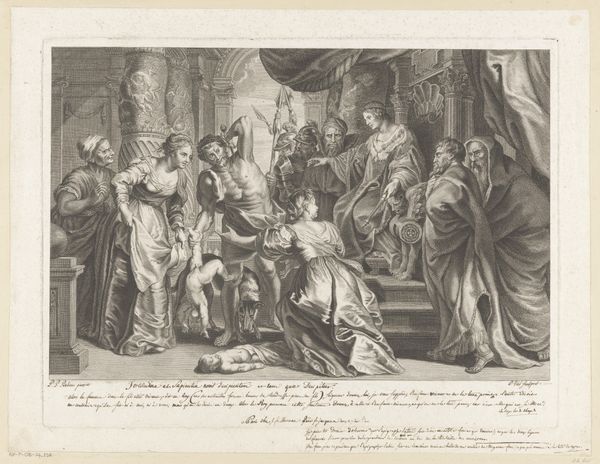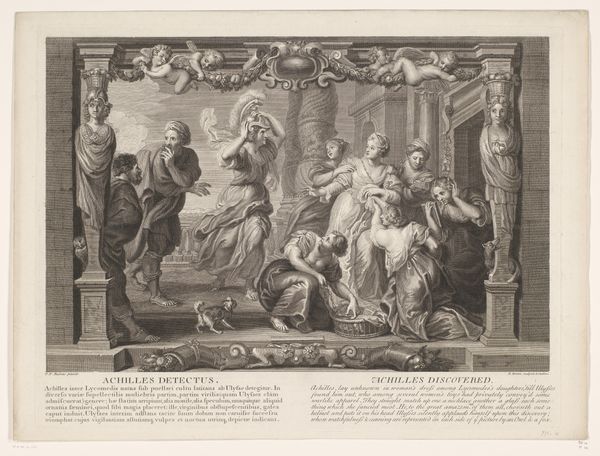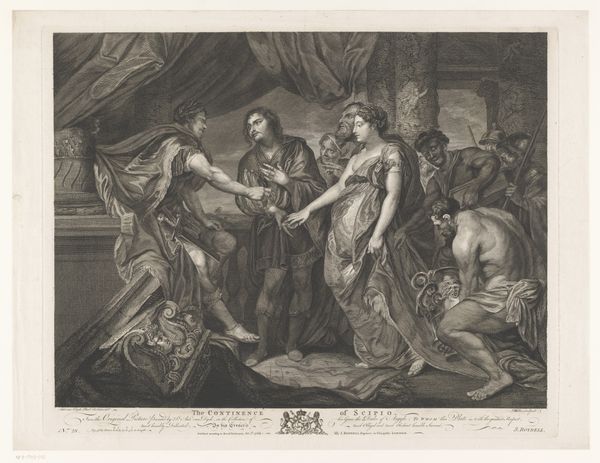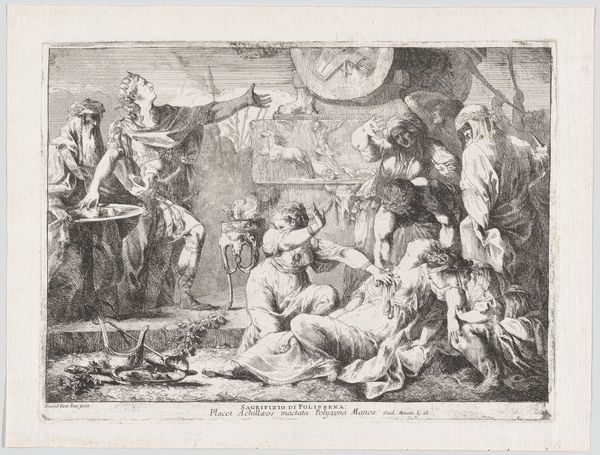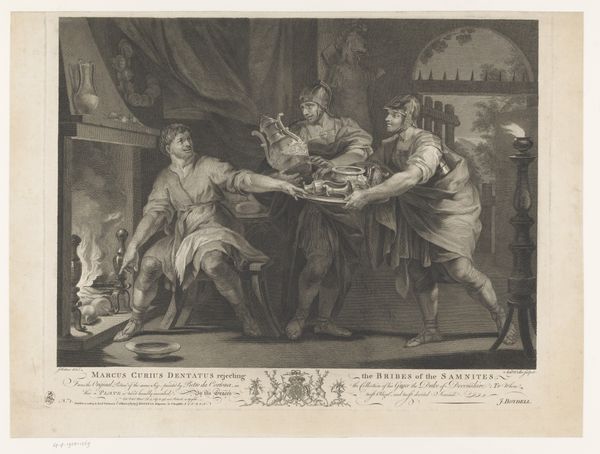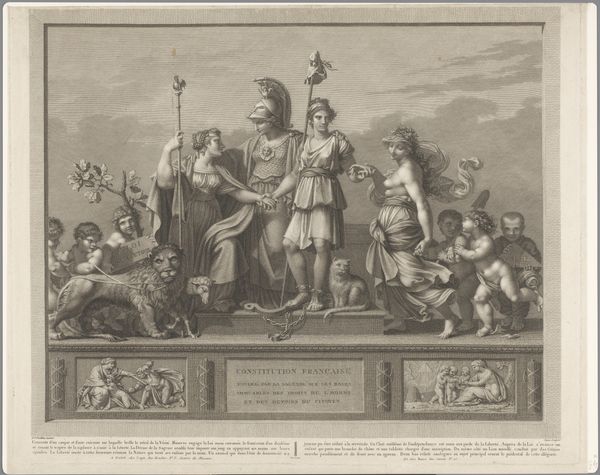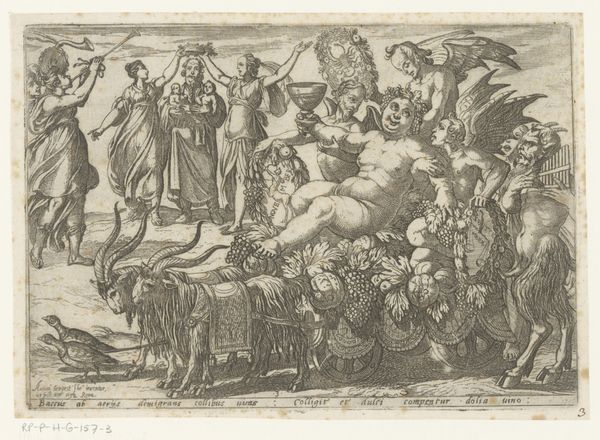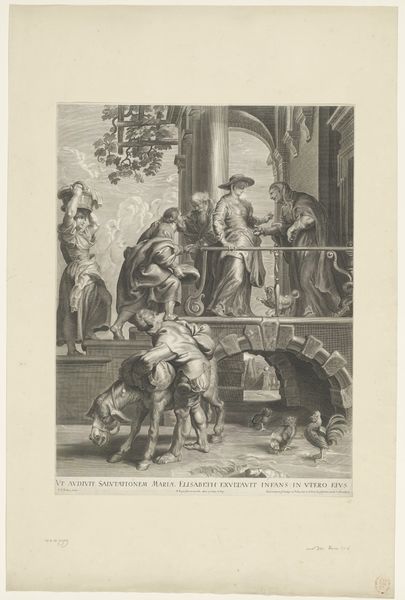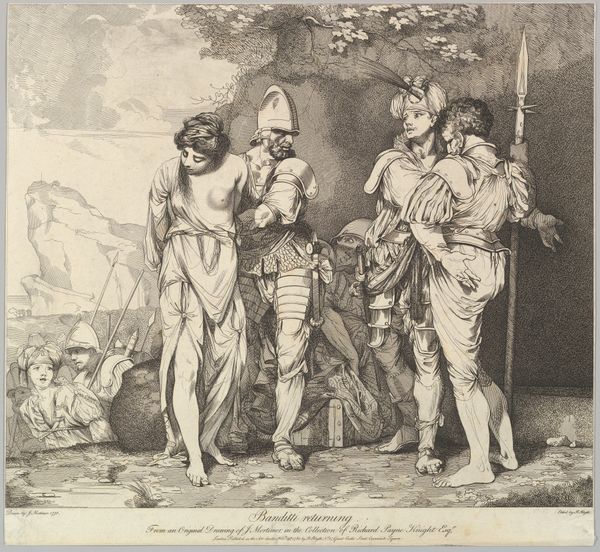
The Head of Cyrus brought to Queen Tomyris 1708 - 1725
0:00
0:00
drawing, print, engraving
#
drawing
#
narrative-art
#
baroque
# print
#
charcoal drawing
#
figuration
#
coloured pencil
#
history-painting
#
engraving
Dimensions: Sheet (Trimmed): 14 9/16 × 19 1/8 in. (37 × 48.5 cm)
Copyright: Public Domain
Editor: This is Gaspard Duchange's engraving, "The Head of Cyrus brought to Queen Tomyris," created sometime between 1708 and 1725. It's incredibly detailed and quite disturbing. The composition feels very theatrical, with the figures arranged almost like actors on a stage. What do you see in this piece, especially regarding its historical context? Curator: Beyond the immediate spectacle of violence, this work offers a potent glimpse into the intersections of power, gender, and cultural conflict. Duchange's depiction, while rendered in the Baroque style, reflects an era grappling with evolving notions of female leadership and resistance against patriarchal dominance. Editor: So, the image of Tomyris is more than just a queen enacting revenge? Curator: Exactly. Tomyris was the leader of the Massagetae. Think about what it signifies when a woman, a "barbarian" queen in the eyes of the European viewers of this engraving, is shown not only defeating a powerful emperor like Cyrus but also enacting a brutal, symbolic act of vengeance. How does this challenge or reinforce existing European perceptions of women, particularly those in positions of authority? Does it become an argument for female power? Or a cautionary tale about "unnatural" female rule? Editor: I hadn't considered how her identity as a “barbarian queen” would play into it. I was primarily focused on the graphic, violent nature of the scene and trying to see how that reflected baroque values. Curator: The violence is undeniable, but we have to delve deeper. How does the engraving’s distribution as a print potentially amplify its message, reaching wider audiences and shaping public opinion on these complex themes of gender, power, and cultural difference? Editor: So it's less about a single artist’s perspective, and more about how the work functioned as a piece of cultural dialogue. I hadn't considered that it could spark larger conversations around female leadership at the time! Curator: Precisely. Understanding the social and political context enriches our experience of the image and reveals a historical power struggle represented here.
Comments
No comments
Be the first to comment and join the conversation on the ultimate creative platform.
